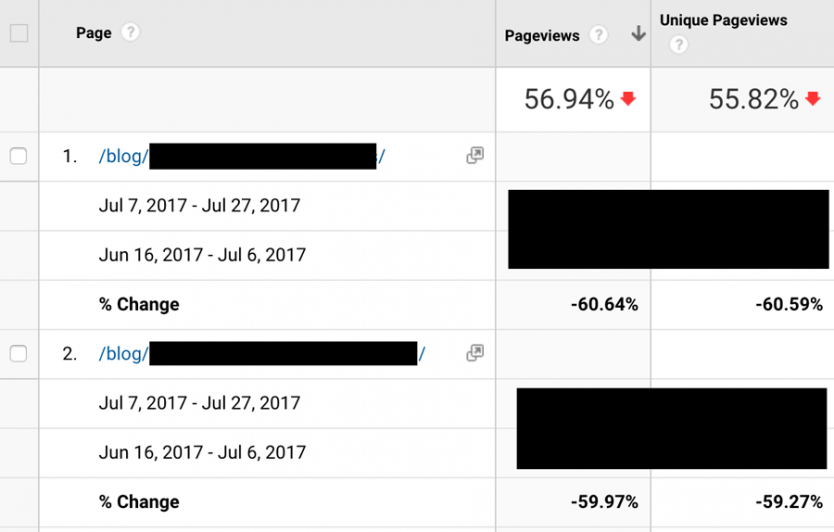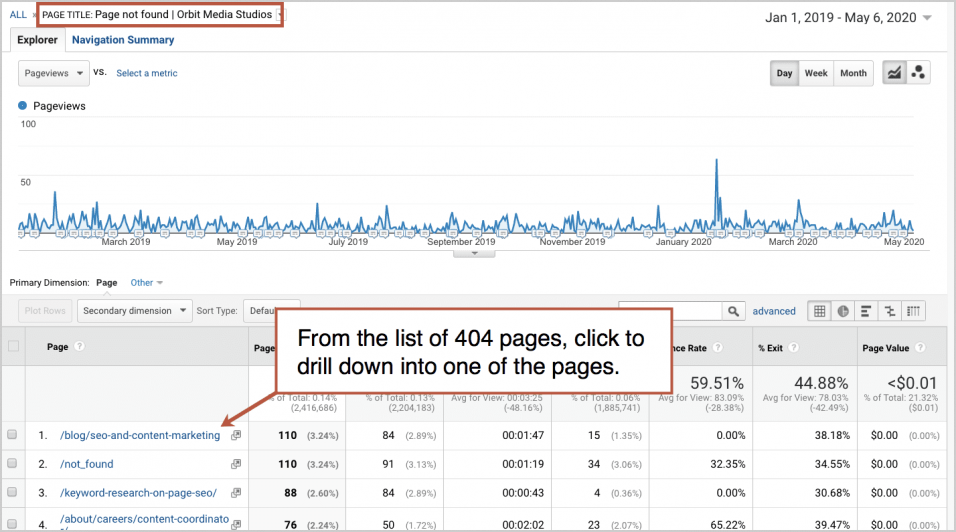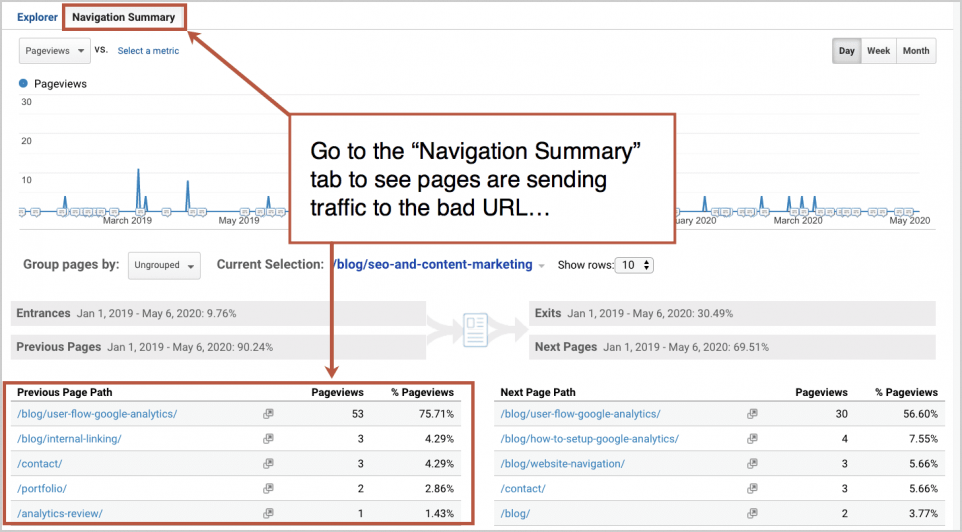SEO visibility shows site owners the percentage of all clicks a site gets for a specific keyword. Read on to learn about the 7 ways you can increase search visibility for your site.
Is your site experiencing a drop in organic traffic?
Chances are you have lost SEO visibility.
This guide will tell you more about SEO visibility and what to do to improve your search visibility online.
What is SEO Visibility?
SEO visibility is a metric that shows site owners what percentage of all clicks from organic search (SERPs) their site is getting for a particular keyword.
This clearly shows that SEO visibility is not about raw traffic numbers but rather how your site performs in SERPs in relation to the competition.
Sounds a bit complicated, right?
Well, do not worry, here is an example.
100% SEO visibility is the best possible scenario, which is technically impossible.
It means your site accounts for all the organic clickable features in SERPs in search engines for a certain keyword.
On the other hand, thirty-five percent SEO visibility indicates that 35% of all the SERPs for a particular keyword point towards your site.
It is basically a metric that approximates the percentage of possible organic clicks you can expect from a keyword.
That said, one of the most effective tools to analyze the potential loss of SEO visibility is Google Analytics.
If you lost any visibility, the tool will show it in your organic traffic stats allowing you to assess the scenario and its impact.
To do this, head to your GA and check your traffic compared to the previous weeks or months.
To get there, head to the “Behaviour” section, the “site content.”
From there, you will easily see specific areas of your website that got hit the most.
Keep in mind that this is just organic traffic, not the overall statistics.

Based on the image above it means things are not good.
Starting with the most popular content, move down the list and identify pages that lost the most compared to their trends from a few weeks back when everything was okay.
It is also good to go back a few months or years to identify if the drop is not a seasonal affair.

GA’s “Absolute Change” sorting feature can help you sort the list from the pages that were affected the most, as shown below.
How to Increase SEO Visibility
1. Use long-tail keywords
To improve your SEO visibility, the first thing you must do is identify the best phrases or keywords that you want to rank for in search engine results.
This is where keyword research comes in handy. It usually entails finding out three aspects.
- Long-tail keywords that people are utilizing to search for services or products such as yours
- The volume of searches of the keywords
- How hard it would be to rank for the keywords (this depends on how many authoritative pages or sites are currently performing well in search results for such phrases)
With this data, you can easily choose the long tail keyword to optimize your pages for.
This is because you now have enough information to craft your SEO strategy effectively.
Keywords that can create a significant amount of traffic without being popular with authoritative sites are usually the best.
To get this information, you must use a dedicated keyword research tool like BiQ’s Keyword Intelligence tool.
It lets you key in keywords, and then it provides you with all the above information comprehensively.
Simply enter your keyword and you’ll be shown results with a mix of short and long-tail keywords.
Click on the “Advanced Filter” to filter for only long-tail keywords.
You can also choose how closely related the long-tail keywords are to your main target keyword.
If you aren’t sure of which long-tail keywords to use, you can sort the keywords based on the value and pick the high-value long-tail keywords.
2. Make your website mobile-friendly

It is also important to make sure that your site is fast on mobile devices and that the user experience of people using it on mobile is seamless.
Research shows that 29% of mobile users will quickly move to another website if they are not comfortable with how your website responds.
Similarly, Google usually rewards sites that load faster on mobile with higher positions in search results.
Another notable aspect is that search engines, particularly Google, prefer simple and clutter-free websites (without obtrusive interstitials or popups).
This slows downloading times and affects user experience negatively, a factor that Google doesn’t take lightly.
To help you make your site mobile-friendly and eventually enhance your SEO visibility, read Google’s mobile SEO overview guide.
It contains details on how you can optimize your mobile site’s visibility in SERPs.
Also, this Mobile-Friendly Test tool can help you check how fast your site loads.
3. Use captivating titles and meta descriptions
The keywords you identified earlier were not just for giving you content ideas.
There are other strategic places that you can use to increase your SEO visibility.
They include:
- Page title: this is the clickable text shown in search results for a particular result.
- Meta descriptions: this is the description (summary) usually just below the title in search results
- Headings: headers (H1, H2, etc.) that guides users through an article
- URLs: the address of a specific page, for instance, biq.cloud/keyword-intelligence/

Google considers all these aspects in various ways when indexing your pages and determining whether they are useful to searches for a certain keyword.
Now, while Google states that it does not consider meta descriptions as a ranking factor, it tracks click-through rates that a meta description creates in search results.
High click-through rates indicate that a page is answering a question usefully.
As such, pages with higher CTRs are usually rewarded with better rankings in search results.
That said, do not spam your page by stuffing the above areas with many keywords as:
- It can hurt your odds of ranking high in results. Google algorithms are very sharp at identifying spam.
- May make your website unappealing to users who see it when searching for answers related to your keyword.
As for URLs, make sure they are clean and have a simple structure. Google prefers short, intelligible, and simple URLs.
For instance, if you are selling recliner sofas, it would be better to use “www.yourdomain.com/recliner-sofas” instead of “www.yourdomain.com/rsd/p22w/re”
The key aspects to remember when creating URLs include:
- Use short ones that have your target keywords.
- Break your URLs with punctuation to make keywords obvious to users and search engines (i.e., www.yoursite.com/recliner-sofas is better than www.yoursite.com/reclinersofas).
- Do not forget to use hyphens to denote spaces (i.e., www.yoursite.com/green-shoes)
Clean URLs make it easy for readers to identify useful pages in search results and means that if anyone links to your site and only copies the URL, your keywords will become the anchor text.
What’s more, Google checks words in anchor texts when indexing pages, meaning accurate ones will definitely help you rank better and increase your SEO visibility.
4. Gain high-quality backlinks

Backlinks play a critical role in search engine rankings.
They offer an effective way to show your reliability and enhance your SEO visibility.
They act as concrete proof that other sites find your website valuable and useful enough to associate with it.
Now, while earning backlinks from other sites is not something you can control, as it is up to another site’s editor or SEO to decide whether to link or not, there are ways you can use to track mentions of what you sell or your brand online.
For instance, Google Alerts allows you to check specific terms that appear on the internet and alert you when that term is mentioned.
Therefore, if you get an alert about your brand being mentioned somewhere but it doesn’t have a backlink, reach out to the webmaster and request a backlink to your website.
This can go a long way in showing your authority and eventually boost your online visibility.
Another good way to gain backlinks is by crafting high-quality and creative content.
Other SEOs will begin to appreciate the value of your content and link to you.
5. Improve your lower-ranking pages
Dwell time is the time visitors usually spend on your site, and it plays a critical role in SEO ranking.
When you offer useful content, users tend to stick around for a while to read the information, thus increasing dwell time.
Similarly, research shows that posts that are between 2,000 and 5000 words usually rank better in search results than those with lesser words.
While word count doesn’t affect SEO, no one will read your pages if they are not relevant or provide shallow information.
Longer content allows site editors to provide more value, include more outbound links, and incorporate more keywords that increase dwell time.
To increase SEO visibility, you can also update your existing content and improve its rankings.
Through BiQ’s Rank Tracking tool, you can track your low-ranking pages and re-optimize them to rank better.
The feature in this rank tracker helps users fill in the time lag or missing data you would otherwise see in your Google Search Console.
Just create a rank tracking profile for your site, and you can track your keyword’s daily rankings and historical data.
It will also show your keywords’ gains or losses so you can respond accordingly to secure your keyword rankings or boost your keyword rankings while it’s in trend.
What’s more, it allows you to sort your keyword rankings by pages, so you can see how your overall page ranking has changed over time.
And that’s not all when it comes to improving a lower-ranking page with the BIQ suite.
BiQ Content Intelligence allows users to analyze and optimize content post-publishing.
First, enter your target keyword and page URL, then it will return with a full analysis of your content that includes three parts:
- Paragraph by paragraph analysis
- Overview of your content performance
- WordVector and Fundamental SEO optimization
This information can help you optimize your content, increase dwell time, and enhance SEO visibility.
6. Internally link your pages

An internal link is essentially a link from one page on a site to another page on the same site.
Both readers and search engines use internal links to locate content on a site.
Users use internal links to move around the site.
And it would be daunting to find a page if there are no obvious links to it.
That said, there are various types of internal links.
Besides links on your menu, post feed, and homepage, you can add links within your copy (contextual links).
They direct users towards related or interesting content.
Also, they allow search engines to identify any content on the site that is related and ascertain the relevancy of the content.
This means that the more useful links a page has, the more crucial it will look to search engines.
As such, good internal links are important for your SEO visibility.
Unlike backlinks, internal links are something you can control as an SEO or editor.
With relevant and useful links, you will point your readers and search engines to the most important pages.
This will eventually increase their visibility online.
As you link internally, do not forget to find and correct broken links.
Incorrect links are bad for SEO and UX.
You can easily find them using link checkers such as Screaming Frog (not free) or Google Analytics.
To do this, using GA head to Behavior>site content and then “Page Title” as your dimension. Filter for “Page Not Found.”

It will show you all the bad or broken URLs.
After that, click on any of them in this order >Navigation Summary>Previous Page Path.
These are pages with broken internal links.

7. Check your technical SEO

Though many people treat technical SEO as an afterthought, it plays a crucial role in driving organic traffic.
You might have the most useful, well written, and thorough content.
But very few people will see it if Google bots cannot crawl it.
Think of an apple that falls in the forest where no one can find it.
Yes, it is tasty.
But no one can consume it.
So it is useless.
The same applies to technical SEO.
Without a robust technical SEO structure, search engines will not index your content.
So, what is technical SEO?
It is the behind-the-scenes aspects that power organic growth such as:
- Page speed
- Mobile optimization
- Robots.txt file
- Site architecture
- HTTPS status codes
Though not appealing to everyone, these aspects are essential.
To improve your technical SEO, you must first understand your current position by doing a website audit.
The next step is to develop a plan to address areas where you are underperforming.
Click here for the checklist.
Conclusion
Hopefully, the above tactics helped help you understand how to make your website more visible online.
Though there are other steps you can take to increase your SEO visibility too.
We felt that these tips would cover up pretty much everything.
Google is also very handy in guiding site owners on how to enhance their site’s visibility.
You can find a free guide by the tech giant on optimizing your website for search results here.
Please go through it and implement the guidelines.
It has bolts and nuts of SEO, including using keyword-rich content, metadata, and headers.
Google’s YouTube channel is also awash with great content for anybody who wants to enhance their presence online.




